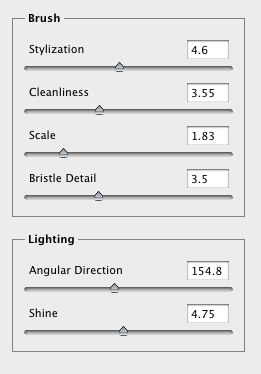Photoshop’s Oil Paint Filter
February 25, 2013 Leave a comment
While I enjoy winter photography in Northern Ontario there are stretches of time when the camera remains inactive. We have been experiencing a ‘normal’ winter this year and there have been periods of extreme cold, snow and overcast conditions. These conditions, together with a winter lethargy contribute to staying indoors a lot. One of my winter projects, apart from catching up on backlogs of recent material, website work, marketing etc, has been to comb the extensive file of transparencies, looking for hidden nuggets worth scanning and digitizing. While optimizing the raw scans I wondered whether some images might be suitable candidates for the Oil Paint Filter now available in CS6.
<script type=’text/javascript’ src=’http://fineartamerica.com/slideshowmouseover.php?id=21873160099&memberidtype=artistid&memberid=218731&width=400px&height=400px’></script>
<img id=’faaslideshowimage[21873160099]’ onClick=’javascript: mouseclick21873160099(event);’ onMouseOver=’javascript: mouseover21873160099();’ onMouseOut=’javascript: mouseout21873160099();’src=’http://fineartamerica.com/Blank.jpg’ style=’width: 400px; height: 400px; padding: 0px; margin: 0px; border: 1px solid #666666; cursor: pointer; cursor: hand;’ alt=’Art Prints’ title=’Art Prints’>
People sometimes ask me ‘Is Photoshop CS6 worth getting?’ and I answer in the affirmative (although I am certainly not a Photoshop expert). I like some of the new tools such as the improved content aware fill, the crop tool plus the way pallettes and layers are now organized. One of the new filters in CS6 is the Oil Paint Filter. Generally I avoid gimmicks such as these types of filters, but sometimes it’s nice to fool around a bit. It’s hard enough overcoming the skepticism inherent with viewing digital photography these days- ‘C’mon, that’s photoshopped….right?’, but I subscribe to the notion that we are making pictures and not always making a purely documentary image of nature.
<script type=’text/javascript’ src=’http://fineartamerica.com/slideshowmouseover.php?id=21873187856&memberidtype=artistid&memberid=218731&width=250px&height=250px’></script>
<img id=’faaslideshowimage[21873187856]’ onClick=’javascript: mouseclick21873187856(event);’ onMouseOver=’javascript: mouseover21873187856();’ onMouseOut=’javascript: mouseout21873187856();’src=’http://fineartamerica.com/Blank.jpg’ style=’width: 250px; height: 250px; padding: 0px; margin: 0px; border: 1px solid #666666; cursor: pointer; cursor: hand;’ alt=’Art Prints’ title=’Art Prints’>
For that reason I do enjoy camera movement photos, lengthy time exposures and variations of in-camera multiple exposures. See my blog post on Interpretive Images. With the current crop of Nikons (actually in-camera multiple exposure has been around for a few generations of Nikons) it is easy to create multiple exposures. It was possible to perform multiple exposures with film cameras too. It was just a bit more complicated.
As I processed my slide scans, I wondered whether an application of the Oil Paint Filter would produce pleasing variations of some of my multiple exposures and other impressionistic images. If I thought I had a candidate image I would optimize it, save it and then Save As xxx_V2.tif. Below are a couple of before and after examples to consider.
I thought the Oil Paint filter might also produce nice variations of abstract reflection images, such as the examples below. This filter can aslo be used to rescue otherwise hum-drum images that might be consigned to the trash. Images with cluttered detail, boring skies, etc. might be candidates.
If you are interested in trying the Oil Paint filter, there are a number of ‘how-to videos available on the net available through a Google search or a U-Tube search. Below are the settings that I decided to use. As always the on-screen preview gives you an accurate rendition of the final result, which can be tweeked and saved and then re-saved using the history pallete. The filter remembers the last-used settings. In future versions I would like to see Adobe add ‘save custom settings’ to the filter window.




















